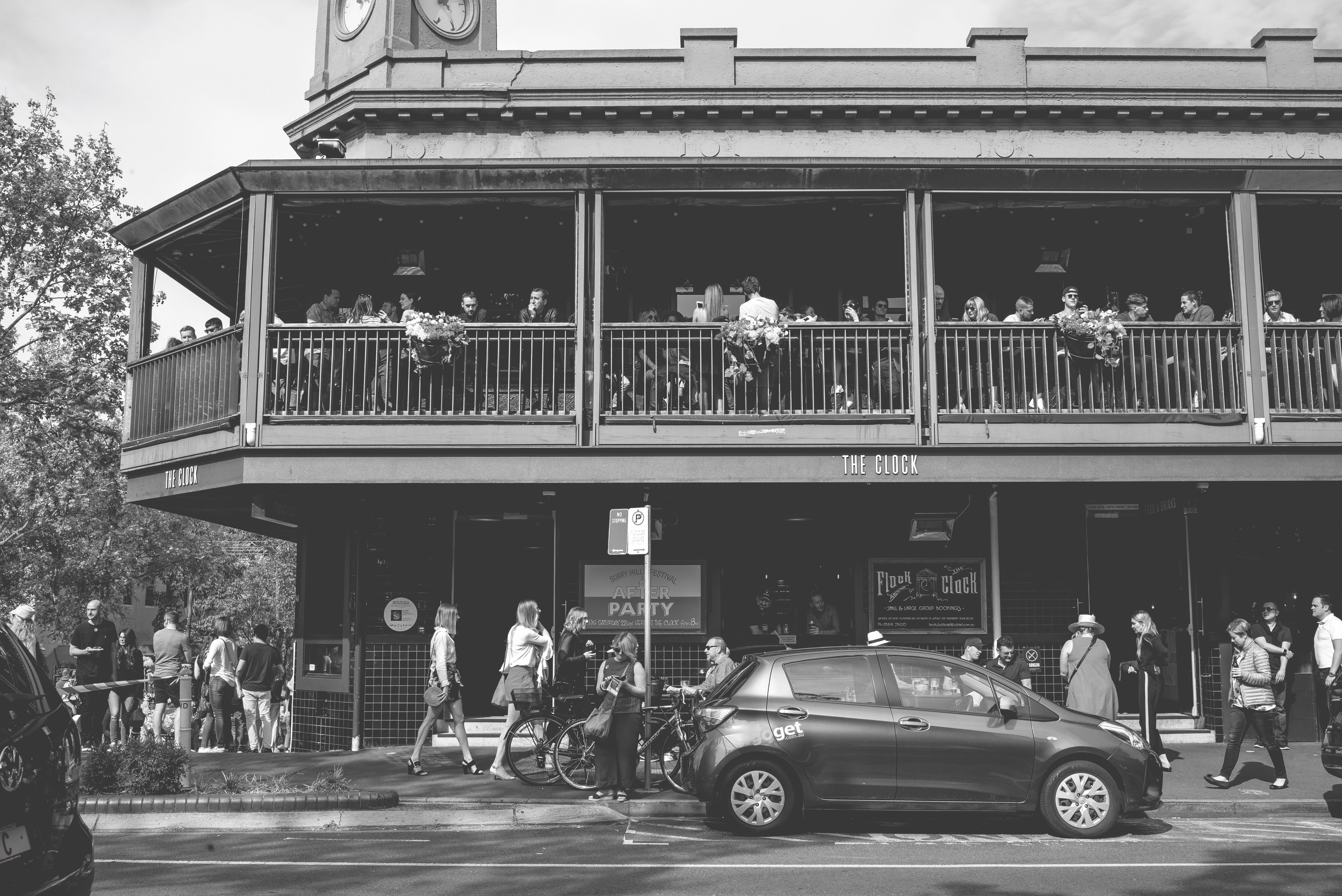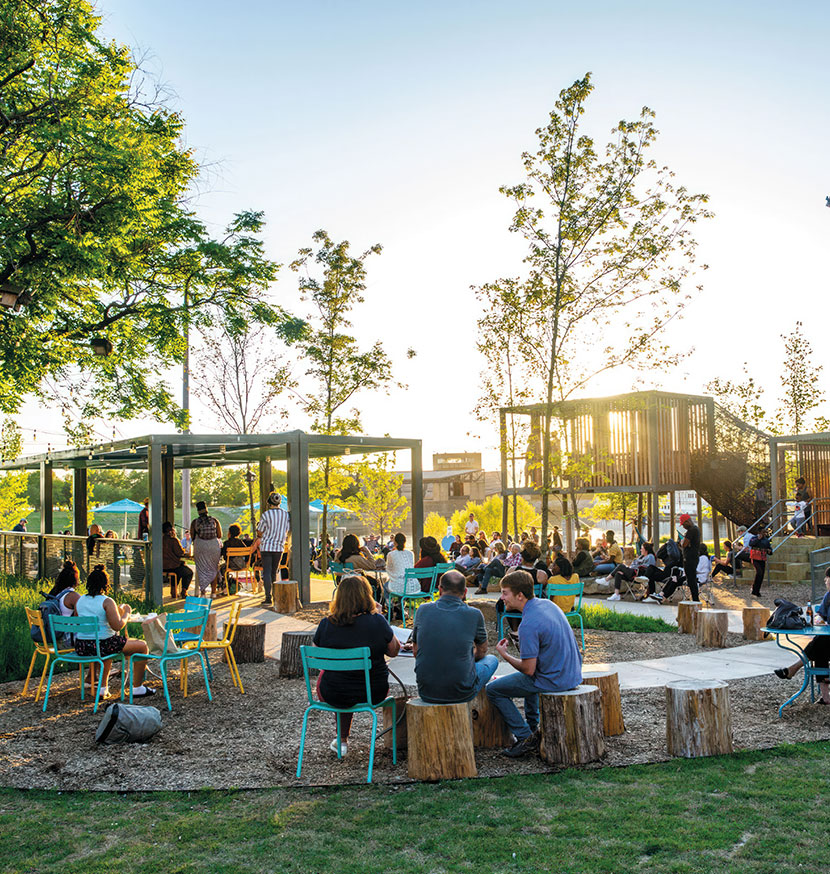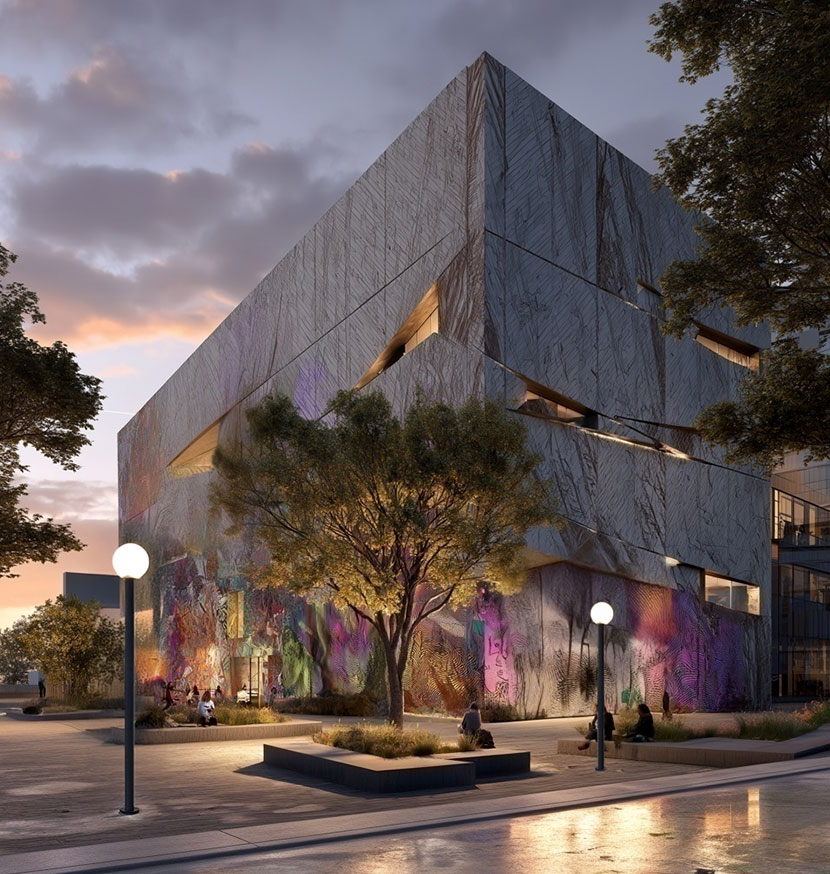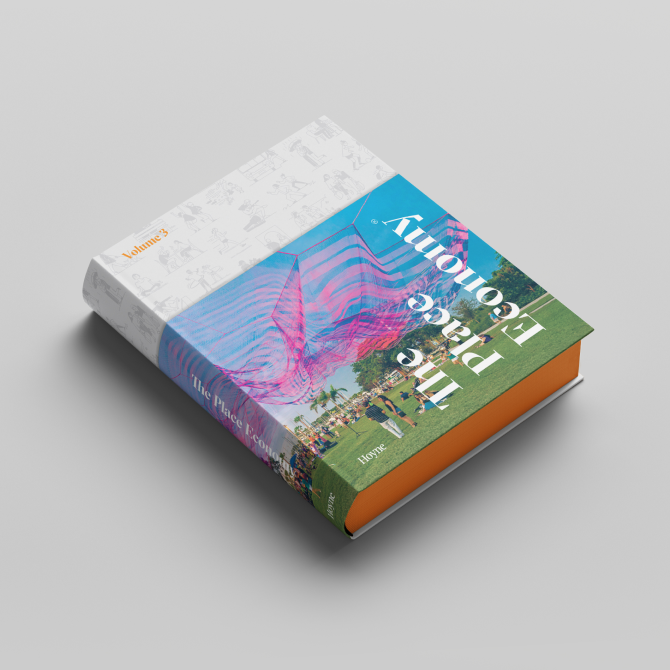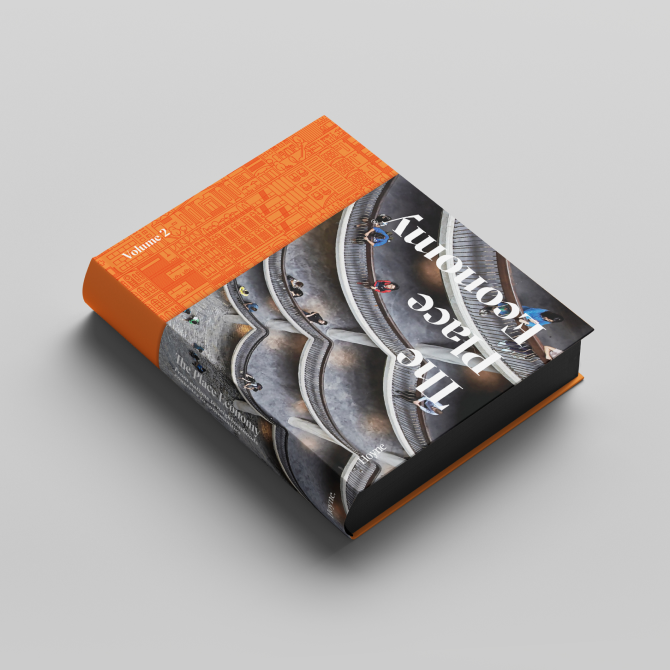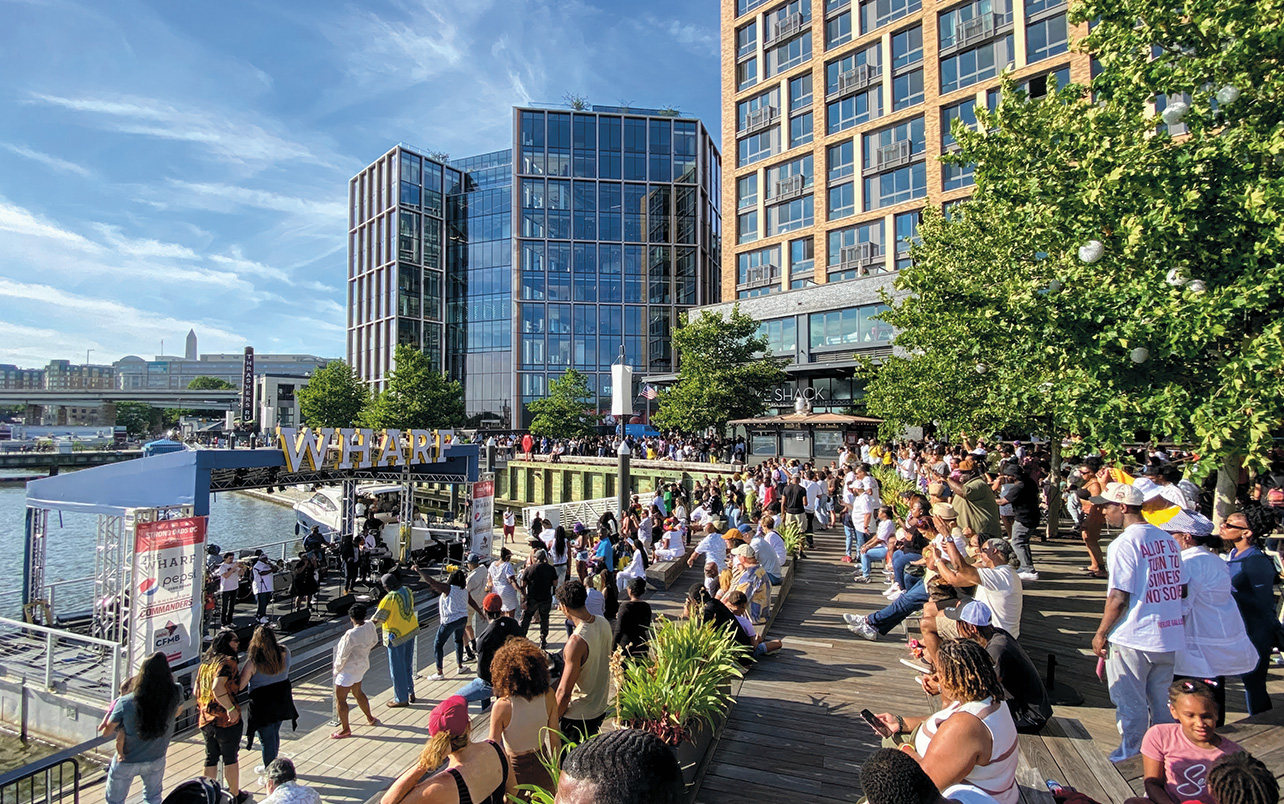
Experience – the new currency in urban development
Immersive experiences are reshaping city-making with proven financial success.
We’re witnessing a profound shift in how people engage with places, brands and communities. The Experience Economy is far more than a buzzword; it signals a seismic change in consumer behaviour and urban design. Instead of merely purchasing products or services, people now seek memorable, emotionally rich experiences that resonate deeply and endure. First defined by Pine and Gilmore 25 years ago, the Experience Economy is no longer a passing trend – it’s the foundation of relevance in modern development.
Today, three out of four millennials prefer to spend on experiences over products. Reflecting this trend, the global immersive entertainment market was valued at $133.6 billion in 2024 and is projected to soar to $473.9 billion by 2030.
Think about it: would you rather buy a generic coffee, or enjoy a cup in a vibrant café filled with art, local music and friendly chatter? The future of retail, residential living, and public spaces hinges on this shift – from transactions to immersive moments that spark curiosity, participation and storytelling.
What’s driving this change?
At its heart, the Experience Economy is about why we engage: to feel something meaningful, to belong, to be part of a story bigger than a simple purchase. This shift is backed by real data: shoppers spend more time and money in places that offer authentic experiences, and they return repeatedly.
Luxury brands are transforming their spaces into cultural hubs that blend commerce with community engagement.
One example is sneaker maker, Golden Goose, creators of “Haus” in Venice – a combined store, workshop, archive and artistic hub that nurtures local culture and creative connection. Collaborating with local artists, artisans and the community, “Haus” aims to give back while fostering intercultural dialogue. Workshops on upcycling, tailoring, ceramics and glass engraving take centre stage, alongside skate sessions, theatrical performances, video installations and talks on art, culture and sneakers.
Last summer, UK department store Selfridges transformed its stores into vibrant sports venues with ‘Sportopia’, a series of immersive experiences designed to attract shoppers. Across its London, Manchester and Birmingham locations, visitors engaged in activities like parkour, pub darts, underwater rugby and augmented reality games. Highlights included a rooftop Wimbledon viewing area, an Olympic swimming experience by OMEGA, and a Champion Sports Bar. Shoppers could also digitally try on sports merchandise and football kits via Snapchat’s AR Locker Room and share their looks using QR codes.
Experience isn’t just for retail — property is now in the memory-making business
For property developers and asset owners, the Experience Economy presents exciting possibilities across sectors. Picture this:
- A bustling main street precinct with alfresco dining, live music and curated local shops that create a vibrant, memorable atmosphere.
- A residential complex hosting sunset picnics or community wine tastings, turning ordinary neighbourhood days into memorable experiences.
Adding immersive layers – light festivals, augmented reality heritage trails, interactive public art – deepens the emotional resonance and keeps people coming back. Social infrastructure and event programming build trust and community buy-in, turning a location into a living, breathing experience.
The new role of placemaking: staging moments
Placemaking today is more like theatre directing than traditional design. You’re not simply creating buildings or parks; you’re crafting dynamic stages where people connect with one another and with the stories that make a place unique. This requires designing for immersion and storytelling, embedding local history, culture or Indigenous elements to create emotional resonance and a deep sense of belonging.
Experience, by nature, is never static. Markets, outdoor cinemas, performances and workshops act as evolving layers that keep a place fresh, relevant and engaging over time. Just as important is personalisation and co-creation. When communities are invited to contribute through public art, community gardens or naming initiatives, they become co-authors of the place. This fosters pride, ownership and lasting engagement.
The benefits extend beyond social value. Developments that deliver meaningful cultural and community experiences often face less planning resistance and attract stronger support. They also build reputational gravity, becoming places people talk about, return to and share with others. In a competitive market, that kind of brand equity is invaluable.
Experience drives real financial returns
This isn’t just feel-good theory. There’s solid evidence that investing in the Experience Economy boosts property values, lease premiums, and tenant retention:
- The Urban Land Institute and CBRE found placemaking-led developments lease faster and have lower vacancies.
- The UK Design Council reported well-designed public spaces can lift nearby property values by up to 20%.
- A (2019) JLL study found that retail precincts with strong experience offerings (e.g. food, art, culture, events), dwell times increased by 35–40% and sales per visit grew by up to 20%.
- Experiential precincts like King’s Cross in London, home to Samsung KX -a flagship experience space where visitors interact with new technologies rather than shop – South Bank in Brisbane with its blend of public art, green space and cultural institutions such as QAGOMA, and teamLab’s borderless digital art museum within Tokyo’s Azabudai Hills complex, not only attract millions of visitors and generate billions in local economic activity annually, but also support above-market rents for retail and commercial tenants due to high footfall, strong place reputation and cultural cachet.
Real-world inspiration: Museum of Ice Cream and Meow Wolf
Two standout examples show just how powerful immersive experiences can be.
The Museum of Ice Cream (MOIC) is a pioneering example of the immersive experience economy. From a 2016 pop-up in New York City, it now operates permanent locations across the US and Singapore, and has popularised the “selfie museum” concept, creating highly shareable moments that fuel social media buzz and repeat visitation. Guests engage with vibrant installations like sprinkle pools and interactive rooms designed to evoke joy and nostalgia, with unlimited ice cream adding to the multisensory appeal.
Meow Wolf takes immersion further as an art collective turned experience giant, offering interactive storytelling environments where visitors are active participants. Their success proves that people will choose physical places if they offer something truly unique, emotionally engaging and share-worthy. Rapid expansion, strong investor backing, and operational sophistication show how experience-driven venues can transform underused spaces into thriving destinations. As Forbes reported, Meow Wolf expanded during the pandemic, demonstrating the resilience of immersive experiences even in tough markets. Backed by $158 million in funding, it highlights strong investor confidence in this model.
For property developers the example of Meow Wolf’s scalable, adaptable model proves immersive experiences add strong value across various property types and locations. Immersive operators drive footfall, loyalty and long-term economic gains – vital as retail faces e-commerce challenges. Success doesn’t require a major city; hyper-localised experiences that reflect regional culture build community, support local creatives and strengthen place identity. Prioritise experience over products to future-proof developments.
Sidenote: When Meow Wolf explored opening a venue in Geelong back in 2019, they had interest from the mayor, a developer, and even a potential building. The business case stacked up. But slow government approvals and lack of coordinated action saw the opportunity walk away.
Real world inspiration: As seen in The Place Economy III – The Wharf, Washington D.C.
The Wharf is a revitalised waterfront precinct that has outperformed expectations by embedding experience at its core. Live music on floating stages, seasonal markets, kayak shares and public piers create a vibrant destination year-round.
Residential design prioritises connection over density, fostering a strong sense of community. Residents enjoy water taxi access, diverse dining, and a year-round calendar of events.
Offices are integrated with retail and hospitality, creating dynamic, experience-led workspaces. High-end tenants and hospitality brands signed on early, attracted by the precinct’s vibrancy and lifestyle appeal.
The financial returns have reflected this strategic placemaking. Phase 1 of The Wharf delivered over $2 billion in combined public and private investment returns, with Phase 2 attracting even more capital. The precinct has also become one of Washington D.C.’s top leisure destinations, significantly boosting local tax revenue.
What this means for property developments
For property developers, the rise of the Experience Economy signals a fundamental shift in what makes a place successful. It’s no longer enough to build functional spaces – people now expect environments that engage, delight and invite participation. This applies across every asset class.
- In retail, the focus must move beyond transactional spaces. Customers aren’t just coming to buy, they want to feel something. Experiential hubs with artisan markets, pop-ups and interactive brand activations create emotional connections that drive footfall and loyalty.
- Residential developments must now offer lifestyle as part of the product. Shared gardens, wellness events and “third places” like rooftop lounges, communal kitchens and co-working hubs help residents feel part of a community, not just tenants in a block.
- Commercial offices are no longer just places to work. Tenants expect wellness zones, curated amenities and flexible, programmed spaces that reflect a human-centred approach. Workplaces must now double as experience platforms that attract and retain talent.
- Hospitality has led the way here, with boutique and lifestyle hotels blurring boundaries between hotel, gallery, co-working and social space. These immersive, highly designed environments are crafted to be memorable and shareable – part destination, part experience.
- Mixed-use precincts offer the ultimate opportunity to integrate living, working and leisure through shared experiences. The key is to prioritise place over pure profit, to weave together different uses through a unifying narrative and experiential design.
And let’s be clear: this isn’t about throwing up a mural or hosting a market once a month. True experience-led places are intentional, emotional and participatory. When planning and marketing are done well in advance, they embed local stories into the streetscape. They create platforms for performance, interaction and play. They design for all five senses: light, sound, scent, texture and taste. They consider how people feel the moment they arrive and allow space to evolve over time.
This is where the mindset must shift. Too often, placemaking is bolted on at the end – a gesture rather than a strategy. If you want to build long-term value, experience needs to be embedded from day one. That means budgeting for ongoing programming, hiring creatives and curators, and designing flexibility into the framework. Because in the future of property, it’s not just about delivering square metres, it’s about staging moments that matter.
Why it matters: The real risk lies not in doing it, but in failing to do it
The Experience Economy is reshaping how we define and measure success in property. It’s no longer about counting visitors; it’s about how long they stay, how often they return and how deeply they connect. These emotional touch points translate into real commercial value: higher premiums, faster leasing, stronger tenant retention and elevated brand equity. Investors, especially those with an ESG focus, are taking notice.
In a world dominated by online convenience, physical places must offer something more, something memorable. The developments that thrive will be those that deliver experiences people actively seek out to live, work, shop and play. And the opportunity is here, now, in Australia.
If you’re a developer with vacant space or a council reactivating a precinct, the solution isn’t more retail or another signboard. It’s experience. It’s immersion. It’s designing something unforgettable.
Every developer talks about legacy, vision and shaping the future. This is that future. Shifting from asset delivery to emotional engagement isn’t a nice-to-have. It’s essential. The places that succeed in the decades ahead will be those built around human experience, not as an add-on but as the strategy itself.
The real question isn’t whether to embrace the Experience Economy. It’s how long can you afford not to? Because to truly lead in this space, you must start with a different kind of brief: how will this place feel – not just for the first visitor, but for their children, their neighbours, the street performer, the café-goer, the reader in the sun.
The future of property is about staging moments that matter. We help our clients design places that people don’t just visit, but return to, share and call their own. Ready to shape the next generation of experience-led places? Let’s start the conversation →
Back